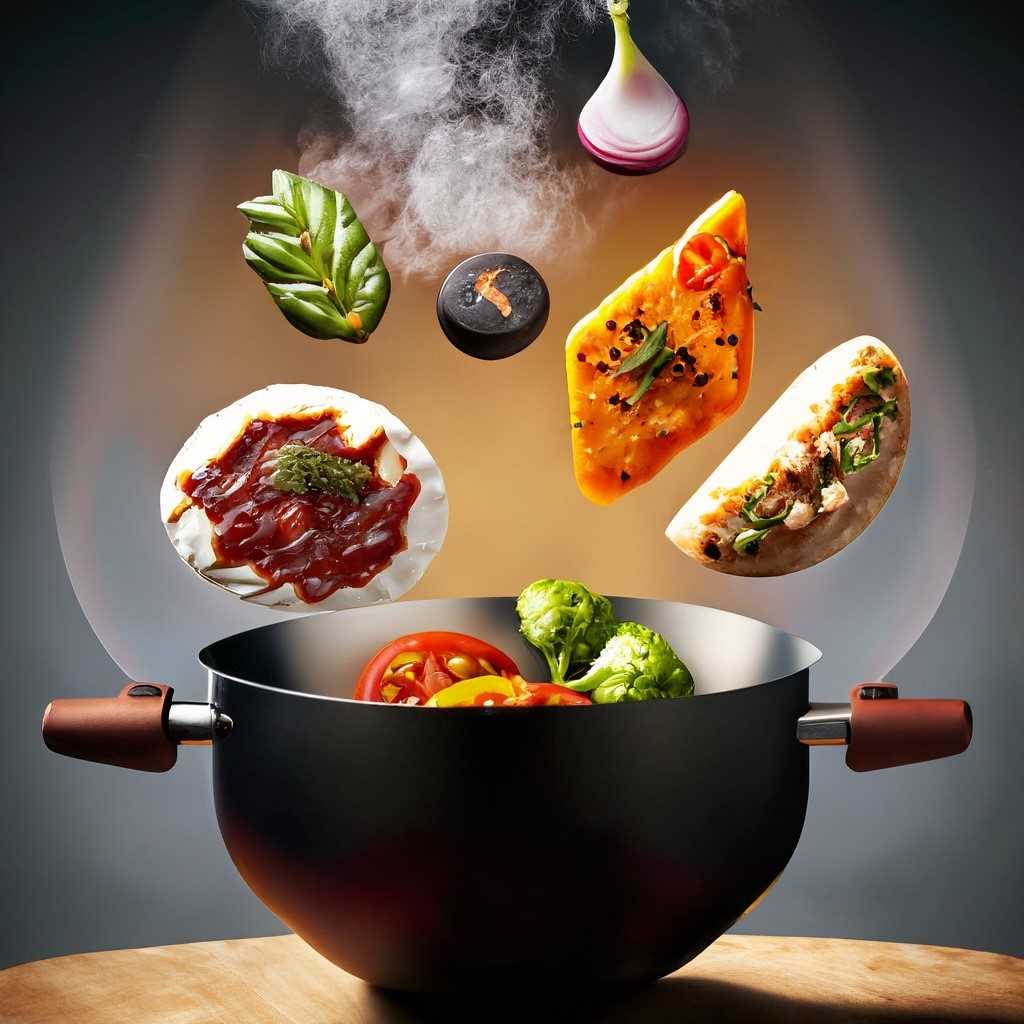The Four Elements of Cooking: Water, Salt, Fire, and Time
Discover the secrets of culinary success with the four elements of cooking: water, salt, fire, and time. Learn how to wield these elements to create mouthwatering dishes that tantalize the taste buds. Unlock the art of perfect seasoning, temperature control, and timing for culinary mastery.

Cooking is an art that requires precision and careful attention to detail. Just as a painter must select the right colors and brushstrokes to create a masterpiece, a chef must consider various elements to craft a delicious dish. Among these elements, four fundamental components demand our utmost care: water, salt, fire, and time. Let us explore how these elements impact the outcome of our culinary endeavors.
Water: The Essence of Temperature and Thickness
Water, often overlooked in its significance, plays a crucial role in maintaining temperature and thickness in cooking. When preparing a dish, it is important to strike the right balance. Too much water can dilute flavors and affect the texture, resulting in a damaged final product. On the other hand, insufficient water can lead to dryness or uneven cooking. To ensure optimal results, it is essential to pay attention to the amount of water used, taking into account the desired consistency of the dish.
Salt: A Delicate Balance of Flavor
Salt is a powerful ingredient that can elevate or ruin a dish depending on its usage. Adding too much salt can overpower the other flavors, rendering the dish inedible. It is crucial to exercise caution and carefully measure the amount of salt added to achieve a harmonious balance of flavors. Remember, a little too much salt and the entire dish may be lost.
Fire: Harnessing the Power of Heat
The element of fire is synonymous with cooking and holds the key to transforming raw ingredients into delectable creations. The intensity of heat directly impacts the outcome of a dish. Increasing the heat can bring about the desired burst of flavors, but once the dish starts to take shape, it is crucial to lower the heat to ensure thorough and even cooking. Precise control of fire is essential to prevent scorching or undercooking.
Time: The Hidden Ingredient
In the realm of gastronomy, time is a factor that cannot be overlooked. While in mathematics, the order of factors does not alter the product, in cooking, it can make or break a dish. Each ingredient requires its own time to release its flavors and textures fully. For certain stews, it is crucial to introduce ingredients gradually, allowing them to meld together and create a harmonious blend of flavors. Timing is of the essence.

Perfecting Beans: A Lesson in Timing and Technique
Cooking beans might seem simple, but it demands precision and an understanding of the four elements. To prepare flavorful beans, a traditional method involves soaking them the day before. The next day, discard the soaking water, add fresh water, a dash of oil, and onion to taste, but refrain from adding salt at this stage. Salt impedes proper cooking and makes the beans hard. Beans require ample water, and it is advisable to keep an additional container of hot water boiling to replenish the pot. Adding cold water will hinder the cooking process and result in tougher beans.
The art of cooking beans continues with a separate pan for frying garlic. Fry the garlic until it reaches a deep golden color, allowing it to infuse the dish with its aromatic essence. Next, introduce the onion to the pan, followed by transferring the beans to a casserole. Allow them to simmer over low heat until they release a thick, desired broth. At this moment, it is time to add salt. Following this order is essential to achieve perfectly cooked beans.
The Chicken and Salt Paradox
Salt plays a vital role in cooking meats and poultry, but it requires careful timing. Never add salt to chicken or meat before cooking, as it can cause them to harden. Salt has the unique property of closing the texture of chicken, resulting in a dish that is cooked but lacks tenderness. The chicken should be cooked in such a way that it is succulent and tender, reminiscent of freshly baked bread when bitten into.
To achieve perfectly cooked chicken, it is advisable to season it with salt after it has been cooked to retain its juiciness. By doing so, you allow the meat to develop its flavors and maintain its desired texture. Remember, when it comes to salt and poultry, timing is everything.
Mastering the Four Elements for Culinary Success
In the world of gastronomy, understanding and harnessing the four elements of cooking—water, salt, fire, and time—can elevate your culinary skills to new heights. These elements, when carefully observed and precisely measured, can unlock the full potential of your dishes.
Water helps regulate temperature and thickness, salt brings balance and flavor, fire imparts transformative heat, and time allows ingredients to harmonize and develop complexity. By respecting these elements, you can create culinary masterpieces that tantalize the taste buds and leave a lasting impression.
Remember, cooking is a journey of experimentation and discovery. Embrace the artistry of the kitchen, and let the four elements guide you to create memorable dining experiences. With practice and a keen eye for detail, you can unlock the full potential of your culinary creations.
In conclusion, whether you're simmering a pot of beans or preparing a succulent chicken dish, paying attention to the four elements of cooking—water, salt, fire, and time—will ensure that your efforts yield exceptional results. So, let these elements be your trusted companions in the kitchen as you embark on a culinary adventure, and savor the joy of creating delicious meals that delight the senses.
In-Text Citation: Rosita Sánchez, Rosita and Estado de México. Conversación En La Cocina, Gastronomía Mexiquense. 1st ed., Mexico, Estado de México, 2006.




